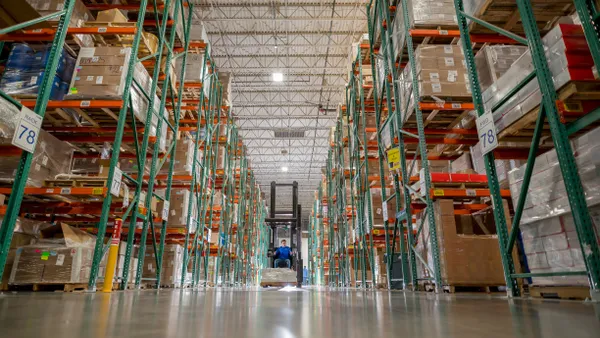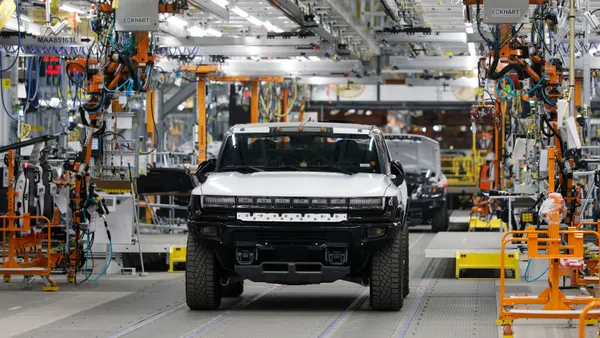Dive Brief:
- A majority of supply chain professionals have already adopted technologies like handheld computers with scanners and tablets, according to a fulfillment survey by Zebra Technologies, a company that sells some of these technologies.
- By 2028, more than 90% of respondents expect to have adopted a wide range of technologies like barcode scanners, RFID inventory management and wearable mobile computers, according to the survey
- Wearables is one technology category seeing a lot of its growth with consumer products like watches and earbuds, but one application — head-mounted displays, which includes augmented reality (AR) and virtual reality (VR) — is arguably making a bigger splash in industry rather than the consumer space, according to a forecast by Gartner.
Dive Insight:
Gartner expects head-mounted display technology like AR and VR to grow by more than 45 million shipments between 2019 and 2022. A lot of the current uses for this technology are being found in business applications as the cost, availability and "unfashionable design" have kept consumer adoption fairly low, according to Gartner.
In industry, and in warehouse settings specifically, such displays already are proving useful. AR hardware can allow a user to see documents or instructions in their field of view that tell the user what item to pick and its location.
VR technology can provide an immersive training experience for new hires or workforce development. Nick Finill, a senior analyst at ABI Research, said VR can reduce the time it takes to onboard new hires, among other benefits.
ABI Research expects global spending for AR warehouse technology to reach $23 billion by 2025 as warehouses look to speed up fulfillment in the age of e-commerce, according to research released last month.
The AR/VR Association's most recent report on the training sector for this technology highlights how many companies are at least interested in its potential. VR and AR companies in the report listed such customers as McDonald's, Ford, IBM, Walmart and Apple.
While many companies are beginning to show interest in this kind of technology, Finill suggests those that haven't do their research and make sure it will improve on existing processes.
"However, companies must be smart about how they integrate multiple technical solutions within the same stack to ensure they remain complementary and ROI is maximized," Finill said.
This story was first published in our weekly newsletter, Supply Chain Dive: Operations. Sign up here.













